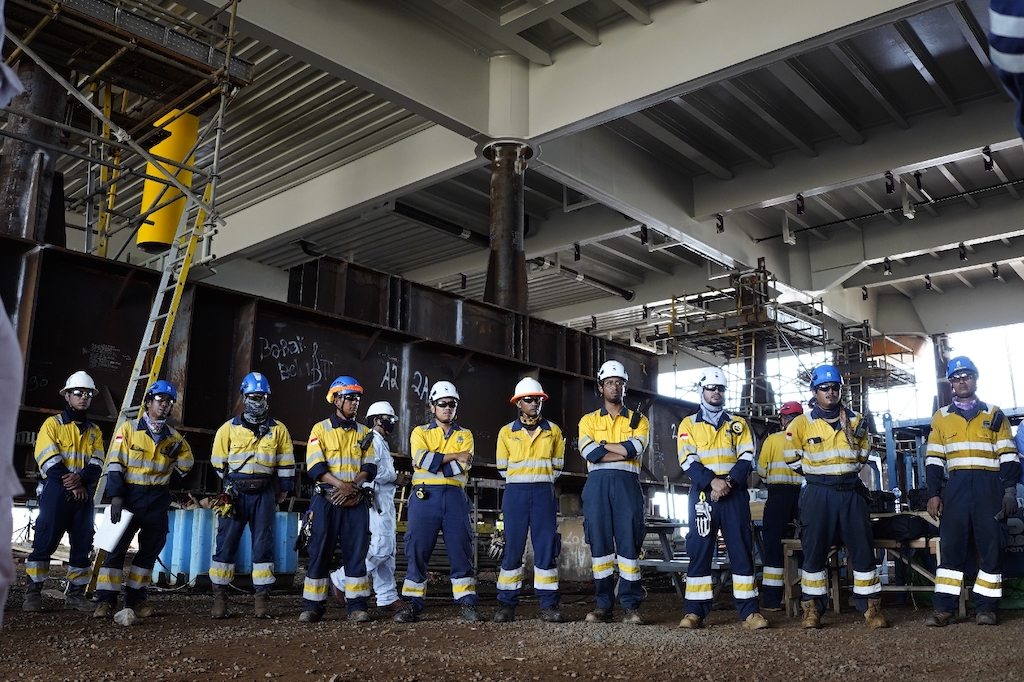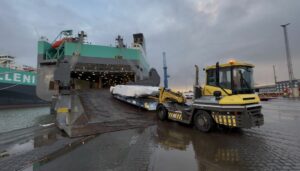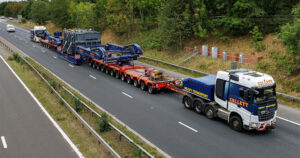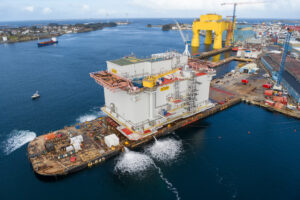The Sofia Offshore Wind Farm, owned by RWE, is set to generate enough green energy to power 1.2 million homes in the UK once it becomes operational. With a power generation capacity of 1.4GW, the wind farm will feature 100 turbines connected to the mainland via an extensive inter-array cable network.
Located 195 kilometers off the UK coast on Dogger Bank in the North Sea, the wind farm’s turbines will be mounted on monopiles and stand 252 meters tall. A key player in the construction of this massive project is Sarens, a global leader in heavy lifting and engineered transport services. Sarens recently completed the Sofia Offshore Converter Platform (OCP) Jacket and Topside Weighing and Loadout project, a crucial step in the wind farm’s development.
The OCP is an essential part of the farm’s HVDC (high-voltage direct current) electrical system, responsible for converting the energy from the turbines into direct current before transmitting it to shore. The energy, initially generated as 66kV alternating current, will be converted into 320kV direct current, and transported via two 7-kilometer cables to the Lazenby converter station.
Sarens played a critical role in transporting and loading the massive OCP components. The topside alone weighed 14,000 tons and stood 57 meters high, while the jacket weighed 5,250 tons and measured 51 meters. This operation marked one of the heaviest topside moves ever recorded in Southeast Asia, as well as globally. Despite the challenges posed by the scale and weight of the components, along with adverse weather conditions during site preparation, Sarens’ logistics team ensured timely delivery.
To accomplish this, Sarens provided a full suite of services, including manpower, engineering expertise, mooring winches, and weighing equipment, as well as 524 axles with 18 PPU Self-Propelled Modular Transporters (SPMTs). A team of 28 Sarens members worked on the project from May 25 to June 15, 2024, at Seatrium’s shipyard in Batam, Indonesia.
The Sofia Offshore Wind Farm is expected to be commissioned in 2026, at which point it will begin supplying clean energy through approximately 360 kilometers of inter-array cables, helping to advance the UK’s green energy goals.






